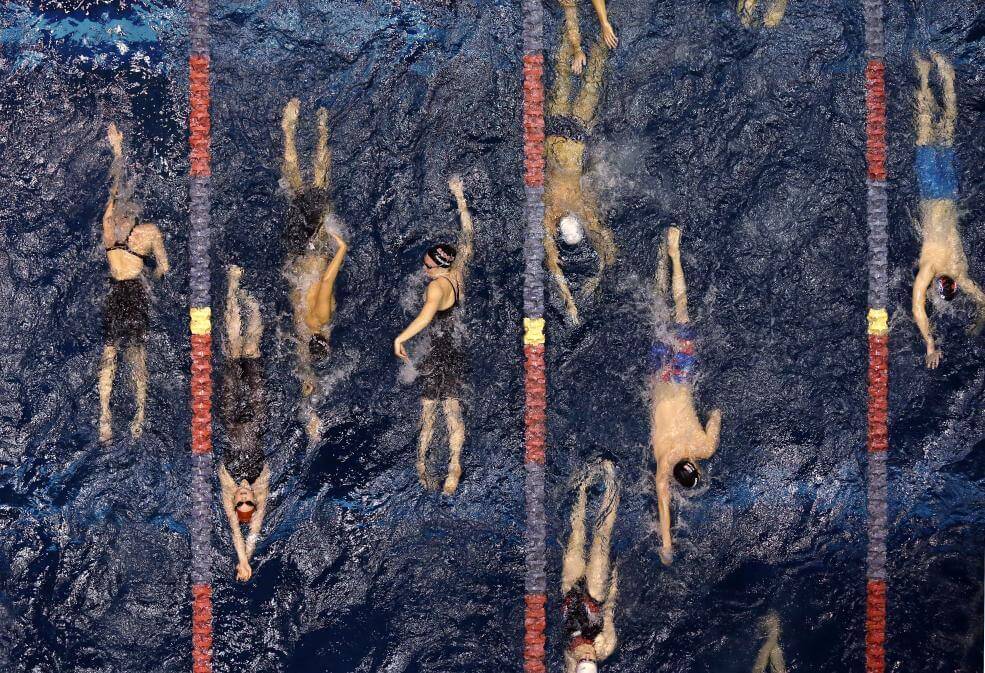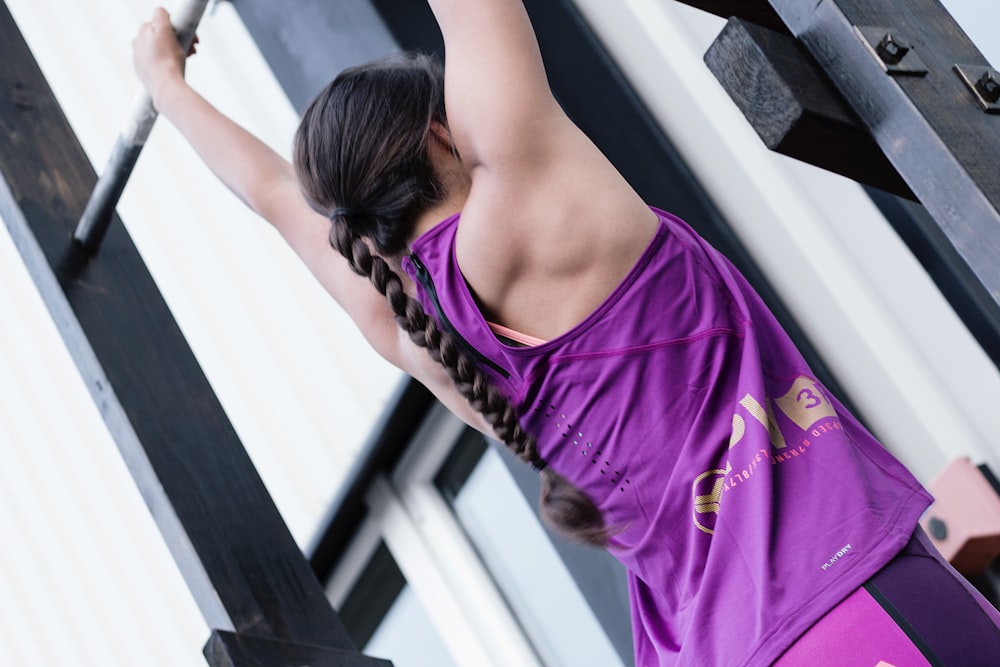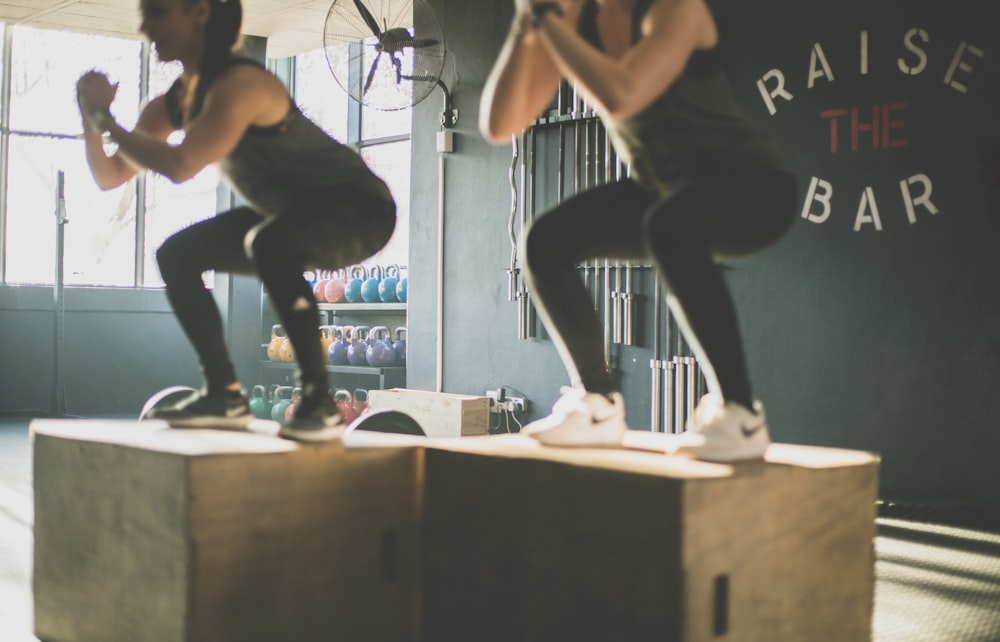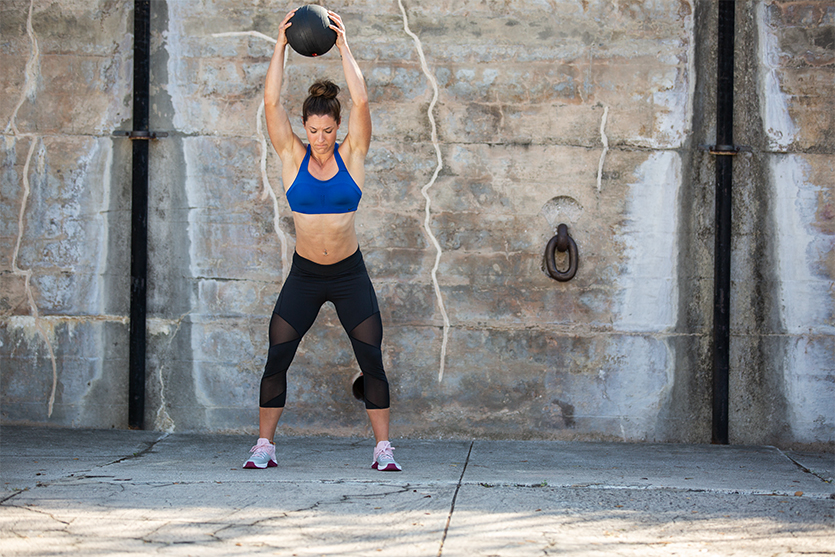5 Dryland Training Exercises To Become A Stronger Swimmer

5 Dryland Training Exercises To Become A Stronger Swimmer
One of the major objectives of becoming a better swimmer is to be able to move faster in the water. While pool swimming obviously helps a great deal, dryland training is another great way to build strength for better results in competition. The five exercises listed below encompass strength and conditioning to increase power, mobility, and flexibility. The ultimate goals of performing these exercises are to become more explosive in the water and to increase speed and stroke rate.
A meta-analysis published (1) in the Journal of Human Sport and Exercise by the University Of Alicante in Spain compiled a comprehensive overview of studies to determine the effect of dryland strength training on swimming performance. The study showed that dryland strength training can improve a swimmer’s ability to produce propulsive force while swimming, therefore improving performance. This was especially effective in shorter sprinting events but may apply to longer distance swim events as well.
1. Burpee

Photo Credit: istockphoto.com
Though it may not be everyone’s favorite, the burpee is a powerful exercise for swimmers. The best dryland training includes exercises that strengthen and stretch the muscles used in swimming, particularly the core, arms, and legs. According to enjoy-swimming.com, the pushup and jumping motions that make up a burpee benefit different muscle groups. Pushups increase arm strength and propulsion. Going in and coming out of this position while performing a burpee increase hamstring strength as well.
2. Pullup

Photo Credit: Martine Jacobsen, unsplash.com
Strengthening the back, lats, and shoulders, the pullup is an excellent exercise for swimmers. It should definitely be added to your training schedule since it targets and strengthens the majority of the major muscle groups used in swimming. By strengthening these muscles, you will develop a more powerful pull which will allow you not only to swim faster but also to swim for longer periods of time.
3. Plank

Photo Credit: Shutterstock
The plank exercise strengthens all the key muscle groups in your core. A strong core can help with rotation during freestyle, which allows for more water to be pulled. Improving core strength can help swimmers improve their flip turn, their underwater dolphin kicks, and even help them off the blocks with more power. Finally, a strong core is needed for starts and turns. If you push off from a wall or block the core will need to be strong in order to allow the other muscles to produce maximum power exertion.
4. Box Jump

Photo Credit: Meghan Holmes, unsplash.com
The box jump is a highly effective exercise to develop stronger and more powerful starts and turns. The box jump incorporates a lot of the primary muscle groups used during the start and turn such as the quadriceps, calves, glutes, and hamstrings. Additionally, box jumps can provide a more powerful snapback in the breaststroke kick.
5. Medicine Ball Slams

Photo Credit: protips.dickssportinggoods.com
The medicine ball slam is another great exercise for developing explosive power and force required in dives, turns, and swimming in general. The medicine ball slam primarily targets the upper body muscles including the triceps, biceps, shoulders, abdominals, and other large back muscles. The arms and back are required when shooting your arms back off the blocks to produce some extra force to propel you over and through the surface of the water.
If done properly, dryland workouts provide benefits including injury prevention in the pool along with an increased stroke rate. If any of these exercises are not in your workout regimen yet, it would be a wise choice to begin implementing them. Be careful, though, as you do not want to injure yourself. Consult your coach or an athletic trainer to be sure you have mastered proper form for each exercise. Focusing on core stability and muscle engagement is critical, as is consistency. In a sport of millimeters like swimming, doing all of the little things properly is key, and these exercises just might be what you need to give you that edge whether in competition or just improving as a swimmer.
All swimming and dryland training and instruction should be performed under the supervision of a qualified coach or instructor, and in circumstances that ensure the safety of participants.




Paige Bower